Last updated on October 22nd, 2023 at 08:45 pm
Small gardens and limited outdoor spaces can still benefit from the beauty and functionality of trees. Careful tree selection is crucial to ensure that the trees you plant don’t overpower your garden but instead complement it. In this guide, we’ll explore a variety of trees suitable for small gardens, emphasizing their aesthetic appeal, space-saving characteristics, and low maintenance requirements. With the right choice, your small garden can become a tranquil oasis, shaded retreat, or even a mini-orchard. Let’s delve into the world of small garden trees and discover the perfect additions to enhance your outdoor space.
The ball catalpa
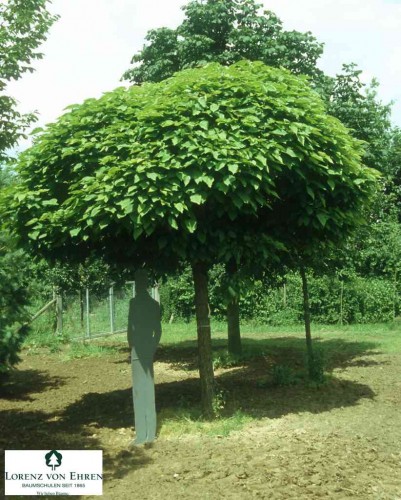
It is shaped like a parasol! In fact, it has the same function. This is the #1 tree I recommend for creating a shady area in a small garden.
It doesn’t take up too much space and its foliage is really dense. On the other hand, unlike its big brother: the common catalpa, it does not flower.
You can buy it with your eyes closed because it adapts to all types of soil.
Contents
Ball Robinia – like the catalpa but more refined
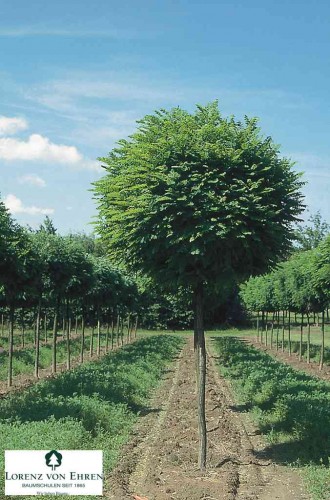
On paper, it looks very similar to the catalpa I presented to you just before: a very dense foliage ideal to create shade, a short span, no flower, no preference on the nature of the soil… The difference is in the leaves. They are all small, like the acacia (mimosa) which inspired its name. It would seem that it would be more refined than the coarse foliage of the catalpa? I let you make your own opinion.
Contrary to the other black locust trees, this one has the advantage of not having any thorns. So there is no risk of stinging yourself by passing the mower near it.
Ball maple – shade and color in the fall
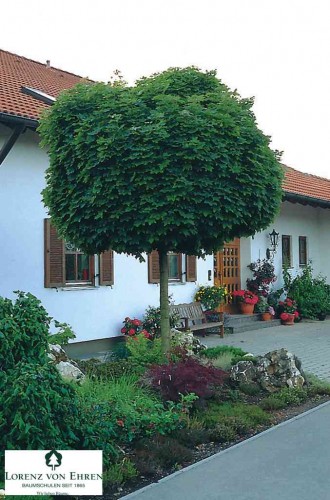
I don’t know what to tell you. Actually, it has the same properties as the two previous trees. It too is perfect for getting some shade in a small garden, whatever your soil.
The only additional advantage is its leaves that take on pretty fall colors before falling.
So no more blabla, if you want some shade, I let you choose between these three plants.
The soap tree – for flowers in summer
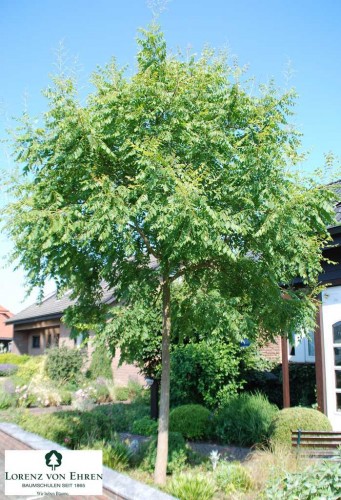
Now we move on to the flowering trees, and I’m starting with the soap tree. Unlike the shade trees we saw earlier, this one will have much less dense foliage. You can still use it to create shade but it will be lighter.
In fact, this tree will be especially interesting to bring color to your garden. First of all, at the beginning of the summer, with its bouquets of small yellow flowers. Then come the fruits which have an unusual capsule shape. Sometimes they turn red. Finally, it is around the leaves to be adorned with yellow in the fall.
In short, a tree that evolves with the seasons.
It will be happy whatever the soil of your land as long as you plant it in the sun.
The Japanese cherry tree – a shower of pink petals
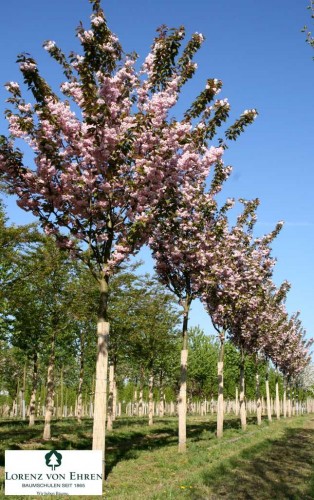
Who has never heard of Japanese cherry trees? Their pink blossoms are fantastic in April, before the arrival of the leaves. If its flowers are quite ephemeral, the fall of the petals with the wind presents a spectacle in itself and it will embellish your lawn until the next mowing.
There are several varieties, but it is the “Kanzan” that will offer a fairly rounded habit to create a shady area in the summer.
Consider placing this tree in the sun for best flowering.
The Judas tree – a flowering like no other
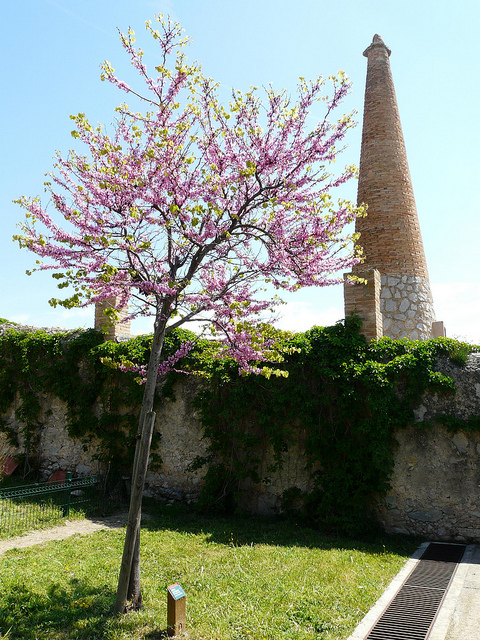
This is my favorite! What I love about it is its flowering. A multitude of pink-purple flowers appear all along the branches, not just at the end of the branches as is the case with most plants. This gives it an incomparable look in April – May before the leaves appear.
Like the previous tree, it can be used for light shade in summer and is best planted in full sun.
One last piece of advice: make sure you choose a stemmed version. There are versions that are more like a shrub (bush).
Ultimately, you have two types of trees to choose from for your small garden.
Those whose main role is to create shade. They have a well rounded shape and dense foliage. From one variety to another, it is the appearance of the leaves that will change.
And those that are more decorative because of their blooms. Even if it is not their primary purpose, they are also able to provide shade in summer but it will be lighter. From one tree to another, they differ in the period and color of bloom.
In both cases, they will come to garnish your garden and even if it is small, it will have a tree like the largest parks. And besides, why not put several of them if the size of your land allows it?
Choosing the right varieties for your garden
You have just discovered several varieties of plants. Before making your final choice, it is important to make sure that the ones you are interested in are well adapted to your garden (the soil, the climate…).


